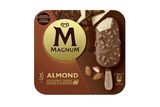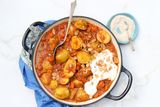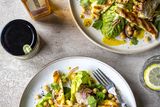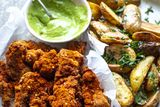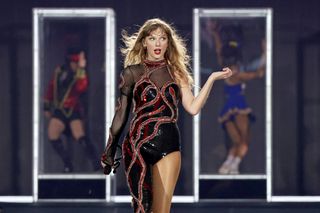Why is our food getting fatter ?
We're grappling with an obesity crisis, yet our favourite foods are still packed with sugar
Crisis: Many health campaigners are calling for a sugar tax
How do you like the sound of this: a dash of cinnamon dolce syrup, blended with coffee, white chocolate mocha sauce and vanilla bean, topped off with whipped cream and a cinnamon dolce sprinkle? Is your mouth watering yet?
Well tough luck, you can't have it.
This is Starbucks' Cinnamon Roll Frappuccino drink, one of six new flavours launched in time for the summer market last month. The bad news is it's not for sale here in Ireland, only in the UK.
The good news, though, is that you probably wouldn't want to drink it anyway. Containing a whopping 102g of sugar per serving, this one beverage alone comprises more than an adult's entire recommended daily sugar allowance of 90g.
Still, if you really want to get your fix, you could try the Strawberries & Cream Frappuccino with whipped cream, which is available here. A Venti size made with skimmed milk still packs an impressive 76.8g of sugar.
How do we find ourselves in this situation? Wasn't the Government, in conjunction with the food and drink industry, going to put a stop to super-size portions to make it easier for you and I to make healthier eating choices?
What happened to the pledges about calories on menus and the prospect of less calorie-dense products to tempt us? In the case of Starbucks, a company that prides itself on its corporate social responsibility, would they not be better off responding to one of the key social issues of our times - obesity - and not produce drinks containing 102g of sugar in the first place?
Lest you think they're the only ones, here are some more examples: Burger King's large strawberry milkshake clocks in at 89.5g of sugar while a similar-sized, more healthy-sounding Mixed Berry Smoothie contains almost as much at 82.4g.
Fancy some dessert after a meal in Pizza Hut? Be mindful of their signature Hot Chocolate Chip Cookie Dough, with caramel and white chocolate, which contains 61g of sugar.
Maybe we should put this into context. The large Starbucks drinks, Venti size, contain 591ml. According to Dr Mary Flynn, specialist in public health nutrition, FSAI, it's important for people to have a visual.
"I don't think Irish people are very good with mls. This Venti size is more than a pint while the next size down, Grande, at 473mls is just under a pint. That's an extreme sort of a drink on many fronts, but mainly because of its size," she says.
"Given the current environment," she continues, "where we have major problems with obesity, there is no need for these sorts of drinks."
Indeed, many see the arrival of some form of tax as the best way to phase out these sorts of sugar-laden temptations.
In the UK, celebrity chef Jamie Oliver has become a champion in agitating for a levy on excessively sugared beverages as part of an anti-obesity campaign.
He's fed up waiting for the government there to take action and has instead taken matters into his own hands. Last month he introduced a 10p sugar tax on every drink containing added sugar served in his restaurants. The money raised will fund better education on healthy eating.
Here in Ireland, anti-obesity campaigner Dr Donal O'Shea has become our own sugar-tax champion. An Irish sugar tax was first proposed in 2011 by then Minister for Health James Reilly. At the time he said he was considering a 10pc levy as part of a plan to deal with the problem of obesity among our population.
A subsequent study by Dr O'Shea and his colleagues concluded that such a tax would have a "small but meaningful" effect and should therefore be implemented.
Like Jamie Oliver, Dr O'Shea is fed up waiting.
"Sugary drinks are the single item most likely to have an impact on childhood obesity," he says. "It's not acceptable for Enda Kenny to say 'no new taxes' when the environment is actively harming our kids."
Dr O'Shea believes we need to use every method at our disposal in order to improve the environment in which we make our food choices.
"The Government has to start using policy and everything at its disposal to fight obesity," he continues.
Even though, he feels, we are uniquely placed to implement a sugar tax due to the size of the country, he is aware of the strong resistance against such a move.
"There has been massive lobbying by industry to prevent such a tax."
At the very least we should try such a measure for a period of two years. "We should implement and evaluate it. If it doesn't have any effect, then get rid of it," says Dr O'Shea.
The consensus from the experts, both here and in the UK, is that legislation is the way forward if we genuinely want to assist people to make healthier, better informed food choices. Voluntary agreements simply don't work.
Dr Mary Flynn was part of the FSAI team that worked on the original 'calories on menus' plan a few years back. "The bigger companies all pleaded with us to make it mandatory."
Even though 96pc of consumers want calories on menus, she says, businesses are afraid that cold harsh calories on menus will put consumers off and drive them away. The thing is, having a calorie count on menus is a really useful tool because it gets people to think about portion size. It's not that food is becoming more calorie dense, according to one of the country's top dieticians Aveen Bannon, it's really a portion-size issue.
"Cakes, muffins and cookies are sold in large portions which many people will eat, therefore increasing their intake of calories," she says.
"Sweet coffee drinks, juices or these Frappuccinos are real examples where people can intake a large amount of sugar calories without realising it. The majority of patients I see are unfamiliar with what a serving size is."
Aveen says the guideline daily allowance (GDA) for total sugars for an adult is 90g per day. WHO guideline recommends adults and children reduce their daily intake of free sugars to less than 10% of their total energy intake.
So if you take an average adult with a basic daily calorific requirement of 2,000, 10pc of that is 200 calories or 50g of sugar (this is a combination of both 'good' and 'bad' sugars).
In fact, WHO recommends an even further reduction to below 5pc, or roughly 25g (six teaspoons) per day, which would provide additional health benefits. This basically means no fizzy drinks or chocolate at all. So where does that leave us?
A spokesperson for the Department of Health says they are currently "monitoring the impact of sugar taxes in other jurisdictions before adopting a formal position on the matter".
Legislation that will make it compulsory to include calories on menus is only in its initial development phase.
In the meantime, the best that we can do as consumers is to try and educate ourselves in order to make better choices and maybe listen to the experts.
"Kids don't need sugar-sweetened drinks," says Dr Flynn.
Aveen Bannon agrees. "Ultimately it is the responsibility of the individual - but it would be easier without the extra large portion sizes to tempt them."
Too sweet to be savoured: the sugar in your favourite treats
1 Starbucks Strawberries & Cream Frappuccino with whipped cream
A Venti size made with skimmed milk packs an impressive 76.8g of sugar.
2 Burger King's large strawberry milkshake
It clocks in at 89.5g of sugar while a similar-sized, more healthy-sounding Mixed Berry Smoothie contains almost as much, at 82.4g.
3 Pizza Hut's signature Hot Chocolate Chip Cookie Dough, with caramel and white chocolate
This contains 61g of sugar.
Join the Irish Independent WhatsApp channel
Stay up to date with all the latest news


